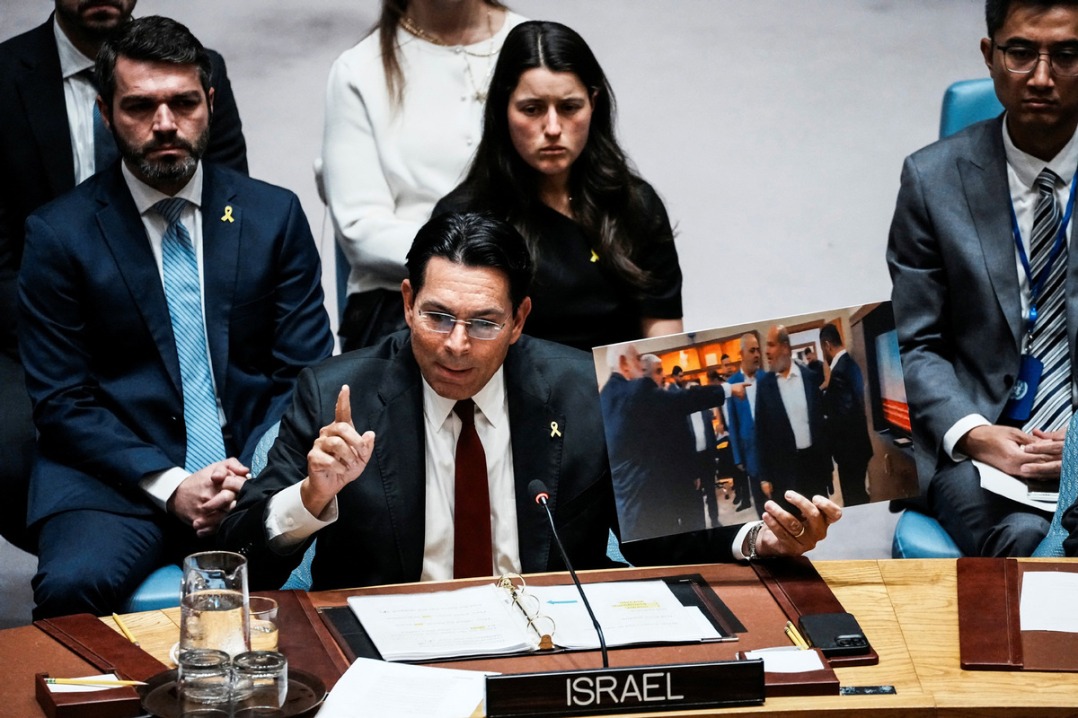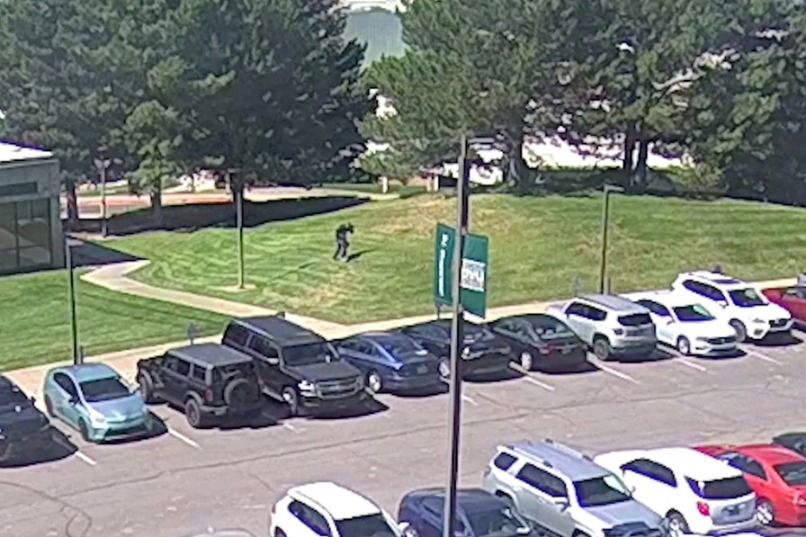US embraces traditional Chinese medicine


Healing properties welcomed amid social, political upheaval
Traditional Chinese Medicine, or TCM, is being used increasingly in the United States to cure modern problems resulting from stress caused by political and social upheaval, including the COVID-19 pandemic.
The practice, which is more than 2,000 years old, dates to the shamanistic era of the Shang Dynasty (c.16th century-11th century BC).
TCM includes acupuncture, cupping, pain moxibustion (a form of heat therapy), herbal medicine, nutrition, tuina massage (used with modern medical techniques to treat a range of conditions), and exercise such as tai chi and qigong, which combine movement and meditation.
It is used to treat arthritis, back, neck and knee pain, gastrointestinal disorders, high blood pressure, stress, anxiety, infertility and many other medical problems.
In the heart of New York City's Chinatown, patients head to the second floor of a nondescript building, passing businesses where dressmakers create traditional qipao gowns, and other premises where kung fu is practiced.
In Suite 201, they visit Yi Qiao Wu's busy clinic to tell the TCM master of their ailments and frustrations.
Dozens of certificates of accreditation from universities and other institutions adorn the walls of Wu's practice. Folders are stacked high in the reception area, where patients wait to be treated.
A humble, unassuming man of few words, Wu has practiced in New York City for 28 years, before which he worked in China for 15 years.
One of his patients, a man in his 50s who requested anonymity, summed up the doctor's ability by saying that Wu is gifted and his talent unmatched.
The patient has visited Wu for the past 15 years whenever he needs routine help for wellness or to boost his immune system. He said Wu's ability to listen to his patients makes the doctor highly intuitive.
"I recently had severe back pain that came out of the blue. As soon as I walked into the doctor's office, he looked at me and said, 'How are you?' And before I could answer, he asked if I had back pain," the patient said.
Wu, who plays down this ability, said: "I just use Chinese techniques, that's all. But I can watch your face, your walk and your attitude to see who you are, your personality, and what is wrong."
On a busy Sunday afternoon in separate treatment rooms, Wu tended to several patients experiencing back pain, those wanting a detox or a "tune-up", and someone with neck pain.
His patients, who include a mix of Chinese and Americans, mostly arrive via word of mouth, as Wu does not have a website.
Using acupuncture, the doctor inserts tiny, sterile, disposable needles in specific areas of a patient's body to target areas of pain or stress.
He also uses small suction cups to draw blood to areas of the skin that have stagnation or blockages that need removing to improve qi, which in traditional Chinese culture is an active principle forming part of any living thing.
For additional help, massage eases pain, and the effects and relief can be immediate.
The patient said: "Wu can 'scan' you in milliseconds and know exactly what's going on before you even communicate with him. I once experienced bloating, which I had never had before, but just one treatment from Dr Wu resolved this issue."
In the US, there are some 27,000 licensed Chinese medical providers in 44 states and the District of Columbia, according to the American College of Traditional Chinese Medicine, or ACTCM, which was founded in 1980 and is based in San Francisco.
From 2020 to 2026, the TCM market is projected to grow by a total of $46 billion in North America, Europe, Asia Pacific, Latin America, the Middle East and Africa, according to a report released in July by Quadintel, a market research company based in Chicago.
National attention
Until the 1970s, most people in the US were unaware of acupuncture, which first attracted national attention in 1971, when James Reston, a reporter for The New York Times, was in China with Secretary of State Henry Kissinger during President Richard Nixon's term in office.
Reston received acupuncture in Beijing after undergoing an emergency appendectomy — experiencing instant pain relief due to TCM.
After returning to the US, he decided to write about his experience in an article in July 1971, which is widely credited as being the first time that TCM was introduced to people in the US.
The core belief of TCM is that qi flows through energy pathways in the body called meridians. Each meridian links to an organ, or group of organs, which govern bodily functions.
To stay healthy, it is important to achieve the proper flow of qi, which is considered to be the perfect balance of yin and yang, which are opposites. Yin and yang are present in everything in nature, and an imbalance of qi (too much, too little, or a blocked flow) causes disease.
In 1997, the US National Institutes of Health formally recognized acupuncture as a mainstream medicine. More than 20 years on, many hospitals in several states offer it to manage pain.
Mount Sinai Hospital, one of the nation's largest, with more than 7,200 physicians, including general practitioners and specialists, and 13 free-standing joint venture centers, offers healthcare derived from TCM.
Houman Danesh, director of integrative pain management for Mount Sinai Hospital in New York, believes that acupuncture offers significant benefits for treating back pain, knee pain and headaches. He also believes that TCM's holistic approach is beneficial.
"Healing is a complex multimodal process. It involves science as well as the individual patient's beliefs and goals," he said.
Danesh estimates that more than 1,000 people a year receive acupuncture at the main Mount Sinai hospital alone, and that about 2,000 benefit from the treatment throughout the hospital's system.
"By combining Eastern and Western medicine, we are better able to provide patients with a treatment plan that is more likely to fully address them as individuals, as well as their pain," Danesh added.
Beneficial effects
Extensive research shows that TCM is also beneficial in alleviating pain caused by cancer.
Memorial Sloan Kettering Cancer Center, or MSKCC, a world-renowned cancer treatment and research institution, has locations throughout New York City, Long Island, New Jersey and Westchester. It also endorses the benefits of combining Eastern and Western healthcare, especially to treat cancer.
Jun J. Mao, chief of integrative medicine service at MSKCC, who specializes in acupuncture, said the center, whose acupuncture program started more than 20 years ago, has one of the oldest integrative medicine programs in the West.
"Cancer patients often experience a range of physical and psychological symptoms such as pain, fatigue, insomnia, or neuropathy (diseases resulting from damaged or malfunctioning nerves) related to their chemotherapy," Mao said. Many such patients do not gain adequate relief from Western medications, he added.
"Eastern medicine is often derived from many years of empirical clinical practice. So, the treatments are often a little bit more holistic, really acknowledging the mind and body and the relationship and interaction. I find that Eastern medicine, especially in the context of cancer treatment and survivorship, provides more benefit."
The American TCM Association, or ATCMA, a non-profit organization that promotes Chinese medicine specialties in the US, wants to see more hospitals offering TCM.
Last year, US Congresswoman Judy Chu, a California Democrat, introduced the Acupuncture for our Seniors Act, a bill aimed at increasing access to acupuncture in the healthcare system — an initiative backed by ATCMA.
Chu said in a statement, "Everyone deserves the ability to take control of their own healthcare, and that should include access to traditional Asian medicine, which has been proven successful in treating a range of health problems for thousands of years.
"As Americans deal with a chronic pain and opioid epidemic, support for acupuncture as a safe alternative has been increasing over the years."
Chu wants seniors in the Medicare program to be able to access acupuncture, but notes that licensed acupuncturists are still prohibited from being Medicare providers. Some insurance plans currently cover the cost of TCM.
While the first Chinese who migrated to the US in the 19th century to work on the transcontinental railroad and the California Gold Rush brought TCM with them, it is now welcomed by many cultures.
Frank Griffo, a US citizen living in Petaluma, California, with his wife and two children, has been an acupuncturist with his own private practice since 2005.
"The majority of my patients are either white or Hispanic …because this is California. We have a big Hispanic population, and our therapies are relatively inexpensive for a population that may not have insurance or access to low-cost healthcare," Griffo said.
"Immigrants will often say, 'Oh, my grandmother used to do this, or my grandmother used to give me herbs for whatever, and I always hated it.' This is somewhat familiar and kind of the family history for the Asian community."
After completing his Master's in TCM in 2005 at ACTCM, Griffo spent seven years studying advanced acupuncture techniques.
In 2009, he began making Griffo Botanicals, his own herbal extracts, which he sells mainly to acupuncture clinics.
Used for more than 4,000 years, Chinese herbs enhance acupuncture and sustain the effects of such treatment for much longer than if acupuncture is used alone, according to experts.
Customized herbal blends can also be made in the forms of a tincture or capsule.
Griffo added, "I think TCM is continuing to grow... I see a place for it in conventional healthcare systems.
"A lot of hospitals here in California now have an acupuncturist on staff. Most health insurance covers acupuncture, and Medicare now covers a few diagnoses. I think that the treatment will continue to expand."

































